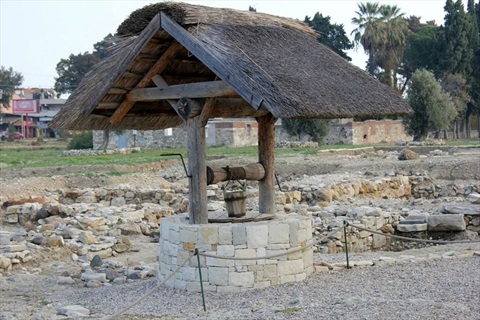Klazomenai Ancient City
One of the twelve Ionian cities, Klazomenai has a multi-layered cultural structure with continuous settlement dating back to 4000 BCE. Part of the Klazomenai Ancient City is located on Karantina Island, where the Urla Bone Hospital stands. The city stretches from Liman Tepe, across from Karantina Island, to the foothills of Ayyıldız and Cankurtaran Hills in the west. The necropolis (cemetery) of the settlement, belonging to the Classical period, lies west of the Ayyıldız and Cankurtaran Hills and along the ancient road connecting Klazomenai, Hypokremnos, and Erythrai.
Liman Tepe, which reflects both the prehistoric and classical periods of Klazomenai, is situated in the Iskele District of Urla and is bisected by the İzmir-Çeşmealtı road.
Liman Tepe was first identified and introduced by Ekrem Akurgal in 1950, with excavation drills initiated by Güven Bakır in 1979. From 1980 onward, excavations continued under Hayat Erkanal, and since 2007, Prof. Dr. Yaşar Erkan Ersoy has been leading the Klazomenai excavations.
The history
Excavations have revealed layers from the Archaic and Classical periods at the top, followed by a layer dating to the second half of the 2000s BCE, identified as the Late Bronze Age. In the Early Bronze Age layer, dated to 3000 BCE, the first signs of urbanization along the western Anatolian coast can be observed in Urla. Traces of the Chalcolithic period dating back to 4000 BCE have been identified at Liman Tepe.
Reflecting at least 4000 years of history along with the classical periods, Liman Tepe stands as the oldest and most continuously inhabited settlement in the Aegean coastal region.
Excavations revealed part of a palace structure representing political and economic authority, defined as a corridor house in the Aegean world and dating to the Early Bronze Age. A city wall with a preserved height of up to 6 meters from the same period was also unearthed. From the Middle Bronze Age, numerous round, single-room houses (oval houses), along with fireplaces and ovens, were discovered alongside small finds.
The city's significance lies in the discovery of an olive oil workshop dating back to the 6th century BCE. This workshop is recognized as the oldest known olive oil production site in the world.
During excavations in various regions, earthenware containers used for separating olive oil by mixing it with hot water, along with hand mortars and grinding stones for crushing olives, were found. These simple, portable tools primarily met household oil needs rather than large-scale production. However, the finds at Klazomenai point to a larger-scale production.
The fully excavated olive oil workshop at Klazomenai proves that technology still in use today was first developed in this region 2600 years ago. In the first phase of Klazomenai, production primarily met the needs of the city and its surroundings. In the second phase, export became more significant. The amphorae with distinctive band decorations unique to Klazomenai, found during excavations, were used for storing and transporting olive oil and wine. This indicates that the city's foreign trade was developed as early as the 6th century BCE.
Together with other Ionian cities, Klazomenai participated in the establishment of Naukratis, a trade center in the Nile Delta of Egypt, and joined Miletus in founding Ionian colonies along the Black Sea coast.






















Comments
No comment left, would you like to comment?